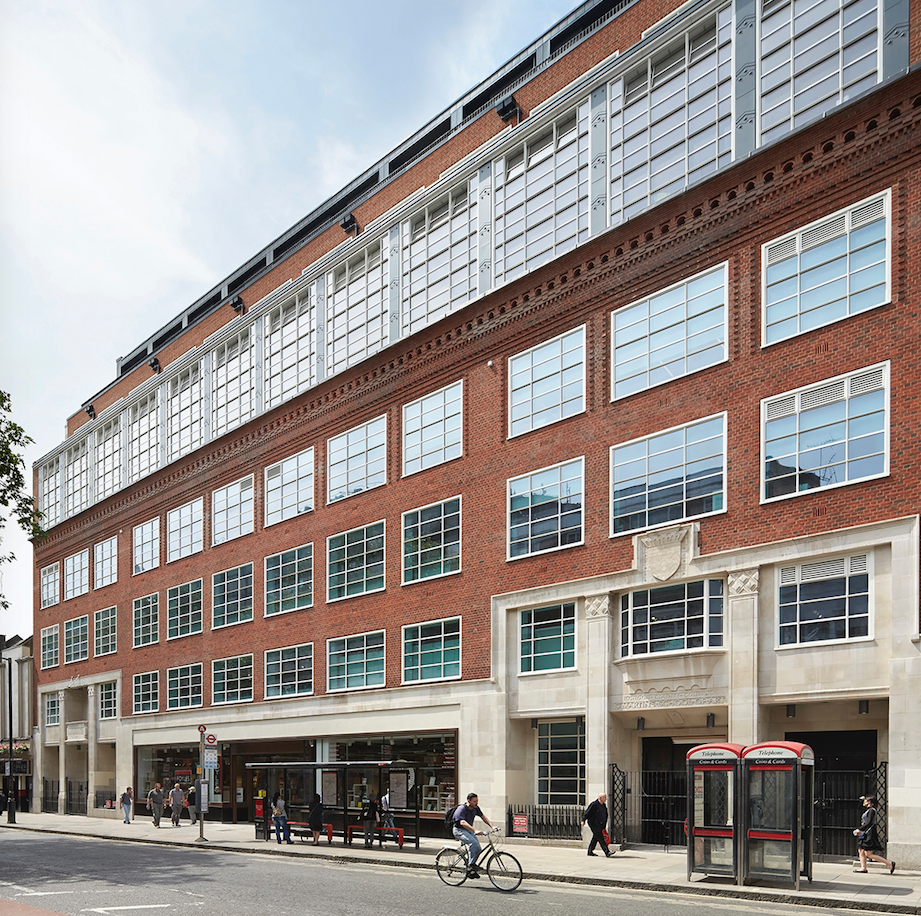Post
REPORT | The Quick Perspective of the Future
17 Apr 2018
On 22 March the London Society were fortunate enough to welcome Alan Powers, author of multiple books on modern architecture in Britain, to give us an insight into the developments of architecture in the 1930’s. Finbar Bradley reports.
Alan was eager to point out that with him at the wheel, this journey would not merely be a single path on a chronological venture but would create points which will make people reflect upon their views. He did not disappoint.
Putting the 1930s into context, after the Bank of England abandoned the Gold Standard, the progression toward using materials and goods only of English manufacturer began. There was a mentality that everything was possible and imagery such as William Walcot’s docking zeppelins at the Savoy Hotel in 1950 seemed feasible. Charles Glover's Kings Cross Airport was another project of idyllic taste, but lacking in the reality of the time.
However, the rational architectural context was somewhat different. The Victorian era had covered everything in decoration and the modern movement was in many cases a matter of scraping off the victorian to find the essence of composed simplicity beneath. At this point, it became evident that there were to be two strands of modernism; the international style and a movement which was later referred to as Regionalism.
Alan intended to highlight both sides of the fence, remove the prejudice of the mind and not merely describe architecture of the 1930s but examine how we as individuals position ourselves against it. He pointed out that, in many ways, the Victorian terrace was a modernist typology which sits within the regionalised sector. Anonymous, unauthorised buildings of peaceful proportions were “the spirit that the new movement should possess.” European Architects such as Bruno Taut helped to reintroduce Britain to their love affair with the terrace, with modernists needing not to reinvent but simply to peer beneath.
Buildings of varying aesthetics were proposed as George VI style by Alan; he describes the style as “flat and papery, like a naval officer in a well cut suit.” Examples vary between John Burnet’s British museum, described by Rendel Goodhart as “expertise restored” and Charles Holden's Arnos Grove Station which formed a town focal point. Its stylistic capabilities do not hold the same rigour as the International Style however its proportions and requirement to embody strong composition give it a character suited to agile implementation.
Toward the end of the decade, where great modernist such as Le Corbusier began to use stone in their work, British Architects moved back to the use of Bricks. 1-3 Willow Way by Ern? Goldfinger illustrating this point perfectly. The exemplar project was EP Wheeler's former St. Martins college which took to ignoring modernism or as he described it; “ye olde modern style” as this had managed to form a purely stylised aesthetic by attempting to rid it self of just this thing. Therefore by ignoring the MARS group and defining the project by surrounding context, the building takes on a character of the place.
It is clear to see that the period of architecture has had ramifications through to the present day and Alan was quick to point out that the George VI style still holds a strong footing in our contemporary work. The presentation highlighted the clear necessity of context, something which is becoming a further heated discussion everyday but furthermore opened the floor to the concept that few buildings are made of a style but inherit references from the styles surrounding them.
To be kept up to date with future London Society events, sign up for our free newsletter.
